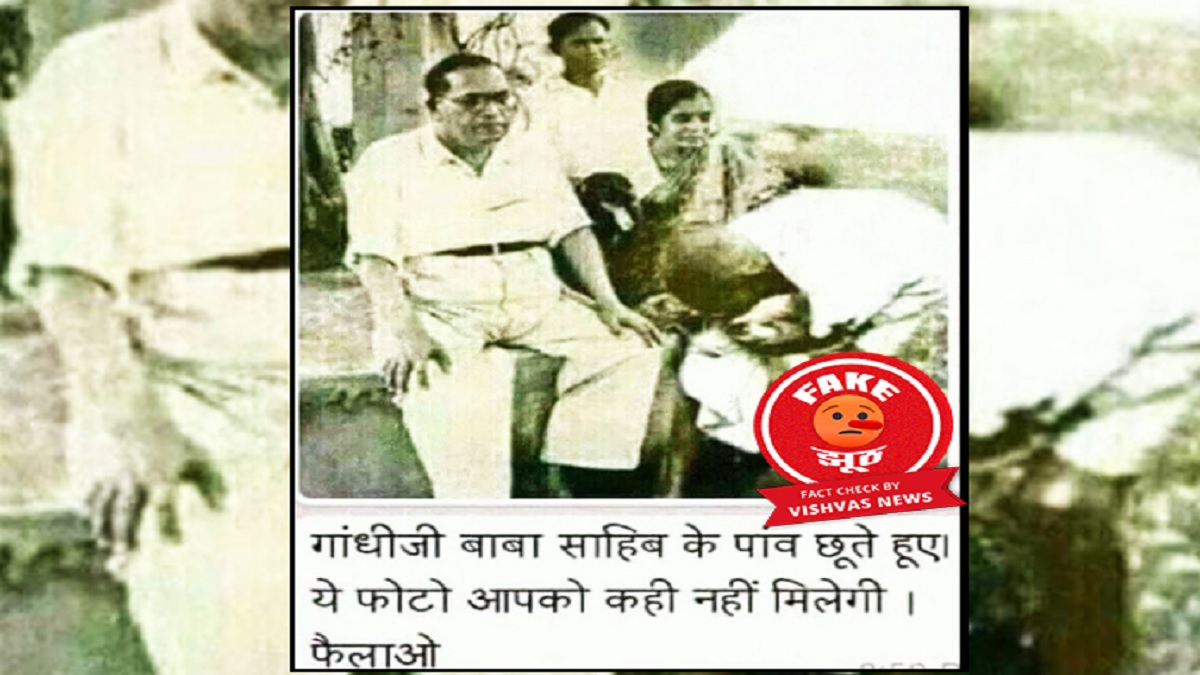The internet is awash with misinformation, and a recent example of this is a viral image showing Mahatma Gandhi bowing to Dr. B.R. Ambedkar. While this image has been widely shared on social media, it has been digitally manipulated. Through careful analysis, it has been confirmed that this picture is a fabricated creation.
Deconstructing the Fake: A Picture’s Tale
This fabricated image showcases a moment that never occurred in reality. To unveil the truth behind this misleading visual, a thorough investigation was conducted. The image was carefully dissected into sections, revealing its true nature.
Identifying the Source: Ambedkar’s Photo
The first step involved isolating the section of the picture featuring Dr. Ambedkar and his wife. Upon tracing the origins of this part of the image, a match was found on a website dedicated to Dr. Ambedkar’s life and legacy. Notably, the original photo depicted only Dr. Ambedkar and his wife, devoid of any presence of Mahatma Gandhi.
Unmasking the Truth: Gandhi’s Image
Further examination focused on the section of the picture displaying Mahatma Gandhi. A search using Google Lens on this portion revealed its source on a website named Weebly.com. The original image captured Mahatma Gandhi in a position of bowing or touching the ground, not kneeling before anyone’s feet.
The Danger of Fake News: A Distorted History
The circulation of fabricated images like this poses a serious threat to truth and historical accuracy. It can:
- Distort the narrative: Manipulated visuals can present a false portrayal of events, misleading viewers into believing a narrative that is not grounded in reality. This can skew understanding and distort historical perceptions.
- Undermine trust: When people encounter fabricated content, it can erode their trust in reliable sources and genuine information. This can lead to confusion and difficulty in separating fact from fiction.
- Promote prejudice and division: In sensitive cases, such as the present scenario, fabricated images can fuel prejudice and division by suggesting false relationships or actions between prominent figures. This can create societal tensions and hinder progress towards unity.
Beyond Images: Combating Misinformation
While debunking fabricated images is important, it’s crucial to understand the broader implications of fake news in the digital age. We must be vigilant about the information we consume online, always verifying sources and looking for multiple perspectives. Engaging in critical thinking and fostering a healthy skepticism towards information is essential for safeguarding against misinformation and maintaining a sound understanding of the world.
Takeaway Points:
- The viral picture showing Mahatma Gandhi bowing to Dr. B.R. Ambedkar is fabricated, created by merging two separate images.
- Fake news can distort history, undermine trust, and fuel prejudice.
- Critical thinking and skepticism are essential for combating misinformation and maintaining truth in the digital age.




